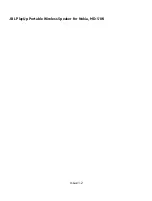
INSTALLATION
Figure 1.
Mounting the Speaker using the supplied grille.
Figure 2.
Mounting the CS265 using the supplied grilles.
Rotate tweeter so it is angled toward the listener using the
UniPivot
™
(patent no. 6,002,780) feature on the Speaker.
Figure 3.
Mounting the CS265 in 165mm speaker locations.
Rotate tweeter so it is angled toward the listener using the UniPivot
™
(patent no. 6,002,780) feature on the speaker.
INSTALLATION WARNINGS AND TIPS
ABOUT THESE
INSTRUCTIONS
Installation of automotive stereo
components can require extensive
experience with a variety of
mechanical and electrical proce-
dures. Although these instructions
explain how to install CS Series
multielement speakers in a general
sense, they do not show the exact
installation methods for your
particular vehicle. If you do not feel
you have the experience, do not
attempt the installation yourself,
but instead ask your authorized JBL
car audio dealer about professional
installation options.
LOUD MUSIC AND
HEARING
Playing loud music in an automo-
bile can hinder your ability to hear
traffic as well as permanently dam-
age your hearing. The maximum
volume levels achievable with
JBL speakers, combined with high
power amplification, may exceed
safe levels for extended listening.
We recommend using low volume
levels when driving. JBL accepts
no liability for hearing loss, bodily
injury, or property damage as a
result of use or misuse of this
product.
REAR DECK
PRECAUTION
In some cars, fuel tanks may be
located directly beneath the rear
deck. Before installation, make
sure there is adequate speaker
basket clearance before consider-
ing this location!
INSTALLATION TIPS
• Always wear protective eyewear
when using any tools.
• Turn off all audio components
and other electrical devices
before you start. Disconnect the
(–) negative lead from your
vehicle’s battery.
• Keep speakers in their package
until final installation. When
moving a speaker, always rest it
with the cone or dome facing up.
Never use force to install any
speaker.
• Check clearances on both sides
of a planned mounting surface
before drilling any holes or
installing any screws. Remember
that the screws can extend
behind the surface.
• At the installation sites, locate
and make a note of all fuel lines,
hydraulic brake lines, vacuum lines
and electrical wiring. Use extreme
caution when cutting or drilling in
and around these areas.
• Before drilling or cutting holes,
use a utility knife to remove
unwanted fabric or vinyl, to keep
material from snagging in a drill
bit or saw.
• For door installations, check the
clearance with the windows
throughout the range of the
window’s travel, and verify that a
mounted speaker will not
interfere with the window crank
or power window mechanism.
• If mounting speakers elsewhere,
check for clearance around rear
deck torsion bars, glove box or
other structural elements.
• Do not mount speakers where
they will get wet.
English





















